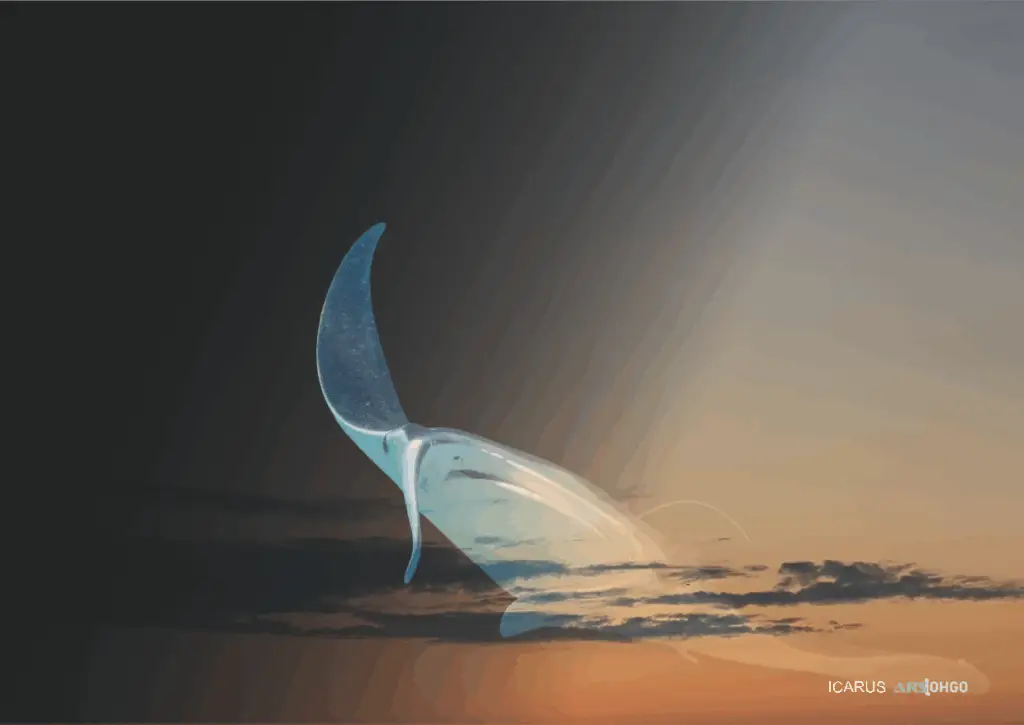Slowly but surely, night gives way to dawn. As darkness shifts through dawn’s first light to the orange-red glow of daybreak, the ray knows it’s time to end its journey through the sky and return to the dark depths below. Looking back on a trip to the French coast: It’s early morning, and Ray Manzarek’s “Too Close to the Sun” (he was the Doors’ keyboardist) plays through my headphones while I take in the breathtaking sky. The combination of the soft music and the view creates images that go beyond what’s real. “Too Close to the Sun” naturally brings Icarus to mind, though his tragic fate shouldn’t be the focus here. This is where the ray enters the story.
The work describes a threshold moment between night and day that mirrors the ray’s journey between sky and sea. Dawn bridges darkness and light, while the ray inhabits both depths and surface, gliding through water with the grace of flight. Though the sea isn’t visible in the picture, only suggested through the ray’s essence, it plays a crucial role.
The connection to Ray Manzarek’s “Too Close to the Sun” adds another dimension—to me, the keyboard notes seem to float and dive just like the ray in the picture. The Icarus reference takes on new meaning here: while Icarus fell because of pride and inexperience, the ray represents wisdom and elegance, understanding when to rise and when to dive, never venturing too close to the dangerous sun.
The ray becomes a kind of anti-Icarus—a creature that’s mastered moving between different worlds. Where Icarus tried to escape upward and met destruction, the ray moves in cycles, always returning to the depths when the light gets too intense. We can think of rays as underwater birds, which suggests the sea might just be another kind of sky with its own rules for flying. In this image, the ray didn’t fail to reach heaven; it found its own heaven in the ocean’s embrace.
The morning scene becomes an image, and with that image comes a story that links sky and sea, myth and reality.
The photograph captures the sky over Dinard, Brittany, and is part of the “Playing Around with Skies” series. The SKY series explores the theme of “sky” through three dimensions: visual, written, and sound.
[A] The combination of the background of the picture (the sky) and another visual object may evoke an (English) term that is ambiguous in German and thus “calls up a second theme”.
[B] In addition, this combination may result in a new subject or an invented word through an equally pronounced but differently spelled word combination, as well as through a differently pronounced but equally spelled word.
[C] Sometimes it is the title of the work that reveals the background and thematic association of the image.
[D] And in the one or other case it is just a modified photograph.

 Posted on June 20, 2025
Posted on June 20, 2025  by arslohgo
by arslohgo 0
0